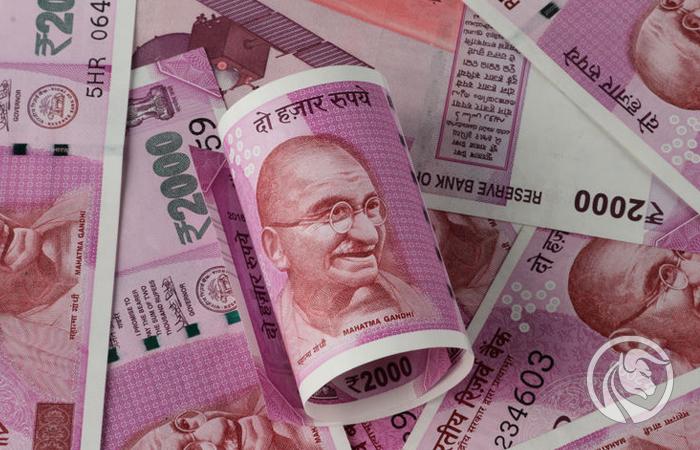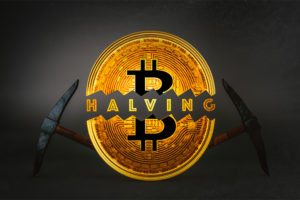There will be a digital rupee because it is cheaper than traditional money
More and more countries are inclined to launch the digital version of their currency. However, there are different motivations. Following the developing world, improving international exchange or maintaining supremacy in a given business field. India pays attention to something else: the cost of operating traditional money. And that's why work is underway to introduce a digital rupee.
How much does cash handling cost? From the issuer's point of view, much more than cashless payments. The so-called operating costs, such as they are surprisingly large in the distribution, storage and printing of new banknotes. The Reserve Bank of India (RBI) estimates the cost of each 100 rupee banknote to be around 15-17 rupees (15-17%)considering that its life cycle is on average four years. After this time, the banknotes are usually so damaged that the RBI has to exchange them for new ones after receiving them from commercial banks.
Therefore, the Reserve Bank of India wants to replace them with a digital version and hopes that this will get rid of some of the problems and costs. Especially since cash payments are still popular, especially in the poorer parts of India. And the central bank wants to change that.
The CBDC (digital currency of the central bank) will be legal tender, being a de facto renewed version of the physical currency, which will ultimately lower the cost of currency management Says Ram Rastogi, a member of the Fin-Tech Association for Consumer Empowerment (FACE), who previously worked with the National Payments Corporation of India.
Digital rupee next year
The creation of the digital rupee has already been officially announced by the Finance Minister of the Hindu government, Nirmala Sitharaman. CBDC is to be tested in the new tax year, i.e. after March 31, 2023.
If the RBI adopts a centralized unit approach where the customer has to open an account to use the digital rupee, the net cost savings should be significant, even considering that any blockchain based system increases electricity charges. Ram Rastogi emphasizes.
In the past 12 months, the Indian central bank has printed around 500. additional banknotes, because the amount of cash in circulation has also increased. So it follows that currency management costs can be cut by hundreds of millions of rupees now, and will be even greater when additional money is introduced into the economy.
CBDC is not a cryptocurrency
At the same time, India is defending itself against the statement that consent to digital currency is at the same time support for the cryptocurrency market.
The digital rupee does not legitimize bitcoin trading in India Said Madan Sabnavis, chief economist at Bank of Baroda.
It is a project to test the national fiat currency. If this starts to happen on a larger scale, the cost of currency management for those involved in the cash distribution system could drop - he adds.
It is worth emphasizing that CBDC is not a cryptocurrency in the common sense of the word, but a full-fledged means of payment, issued by the central bank in digital form. Its value is not subject to additional market fluctuations - it reflects the value of the fiat currency, in this case the rupee. Cryptocurrencies, on the other hand, are decentralized, so they do not have an individual issuer, and their valuation is determined only by the laws of supply and demand.
Thus, CBDC reduces the settlement risk, but on the other hand, it may cause a move away from bank deposits. This, in turn, may translate into less lending opportunities, because the ability to borrow money by banks depends on the amount of deposits accumulated in them. And fewer credit opportunities mean a slowdown in economic development, a decline in GDP and an increase in inflation. Overall, however, there are more advantages than disadvantages, hence the decision to introduce a digital rupee.






















![Forex Club – Tax 9 – Settle tax on a foreign broker [Download the Application] Forex Club - Tax 9](https://forexclub.pl/wp-content/uploads/2024/02/Forex-Club-Podatek-9-184x120.jpg?v=1709046278)
![Trading View platform – solutions tailored to the needs of traders [Review] trading view review](https://forexclub.pl/wp-content/uploads/2024/03/trading-view-recenzja-184x120.jpg?v=1709558918)
![How to connect your FP Markets account to the Trading View platform [Guide] fp markets trading view](https://forexclub.pl/wp-content/uploads/2024/02/fp-markets-trading-view-184x120.jpg?v=1708677291)
![How to invest in ChatGPT and AI? Stocks and ETFs [Guide] how to invest in chatgpt and artificial intelligence](https://forexclub.pl/wp-content/uploads/2023/02/jak-inwestowac-w-chatgpt-i-sztuczna-inteligencje-184x120.jpg?v=1676364263)


![WeWork – the anatomy of the collapse of a company valued at $47 billion [WeWork, part II] wework bankruptcy story](https://forexclub.pl/wp-content/uploads/2024/04/wework-bankructwo-historia-184x120.jpg?v=1711729561)
![Adam Neumann – the man who screwed up Softbank [WeWork, part AND] adam neumann wework](https://forexclub.pl/wp-content/uploads/2024/04/adam-neumann-wework-184x120.jpg?v=1711728724)





![How to transfer shares to another brokerage office [Procedure description] how to transfer shares to another brokerage house](https://forexclub.pl/wp-content/uploads/2024/03/jak-przeniesc-akcje-do-innego-biura-maklerskiego-184x120.jpg?v=1709556924)

![The most common mistakes of a beginner trader - Mr Yogi [VIDEO] Scalping - The most common mistakes of a beginner trader - VIDEO](https://forexclub.pl/wp-content/uploads/2024/03/Scalping-Najczestsze-bledy-poczatkujacego-tradera-VIDEO-184x120.jpg?v=1711601376)
![Learning patience: No position is also a position - Mr Yogi [VIDEO] Scalping - Learning patience - No position is also a position - VIDEO](https://forexclub.pl/wp-content/uploads/2024/03/Scalping-Nauka-cierpliwosci-Brak-pozycji-to-tez-pozycja-VIDEO-184x120.jpg?v=1710999249)
![When to exit a position and how to minimize losses - Mr Yogi [VIDEO] Scalping - When to exit a position and how to minimize losses - VIDEO](https://forexclub.pl/wp-content/uploads/2024/03/Scalping-Kiedy-wyjsc-z-pozycji-i-jak-minimalizowac-straty-VIDEO-184x120.jpg?v=1710336731)

















